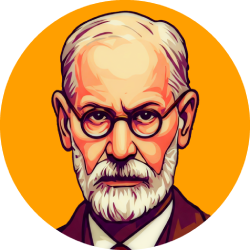Seduction Theory, developed by Sigmund Freud, was an important milestone in psychoanalysis. However, over time, it has undergone significant modifications and, in some respects, was partially abandoned. In this article, we will explore how these changes occurred and why.
Introduction to Seduction Theory
Freud’s theory of seduction suggested that many of their patients’ neurological and psychological symptoms originated in traumatic experiences, especially those related to childhood sexual abuse. This idea was revolutionary for the time, but soon faced criticism and challenges.
As Freud continued his work, he began to question the validity of his own initial theories. He realized that many of the stories of abuse reported by his patients could be fantasies or distortions of reality rather than concrete facts.
Later and critical developments
With the advancement of psychoanalysis, other psychologists and researchers began to criticize seduction theory. They argued that Freud’s approach was very simplistic and did not take into account the complexity of human experiences.
In addition, later studies showed that the prevalence of childhood sexual abuse was lower than initially estimated by Freud. This does not mean that abuse does not occur or that it is not a serious problem, but that its frequency and impact may have been exaggerated.
Partial abandonment of theory
Faced with criticism and new knowledge, Freud was forced to reevaluate his theories. He began to emphasize the importance of childish fantasies and desires in personality formation rather than focusing exclusively on traumatic experiences.
This change of focus marked a partial abandonment of the theory of seduction. Freud came to consider that the stories of abuse reported by his patients could be a way of expressing repressed desires or internal conflicts, rather than necessarily based on real events.
Practical implications and applications
The evolution of seduction theory has significant implications for psychoanalytic practice. Therapists should be aware that the stories of abuse reported by their patients may have multiple interpretations and should not be taken as absolute facts.
Moreover, it is essential to address these issues with sensitivity and understanding, recognizing the complexity of human experiences. Therapy should focus on helping patients understand and deal with their feelings and desires rather than focused exclusively on the search for an objective “truth”.
In short, seduction theory has undergone significant modifications over time, reflecting our increasing understanding of human complexity. By understanding these changes, we can develop more effective and compassionate therapeutic approaches.


